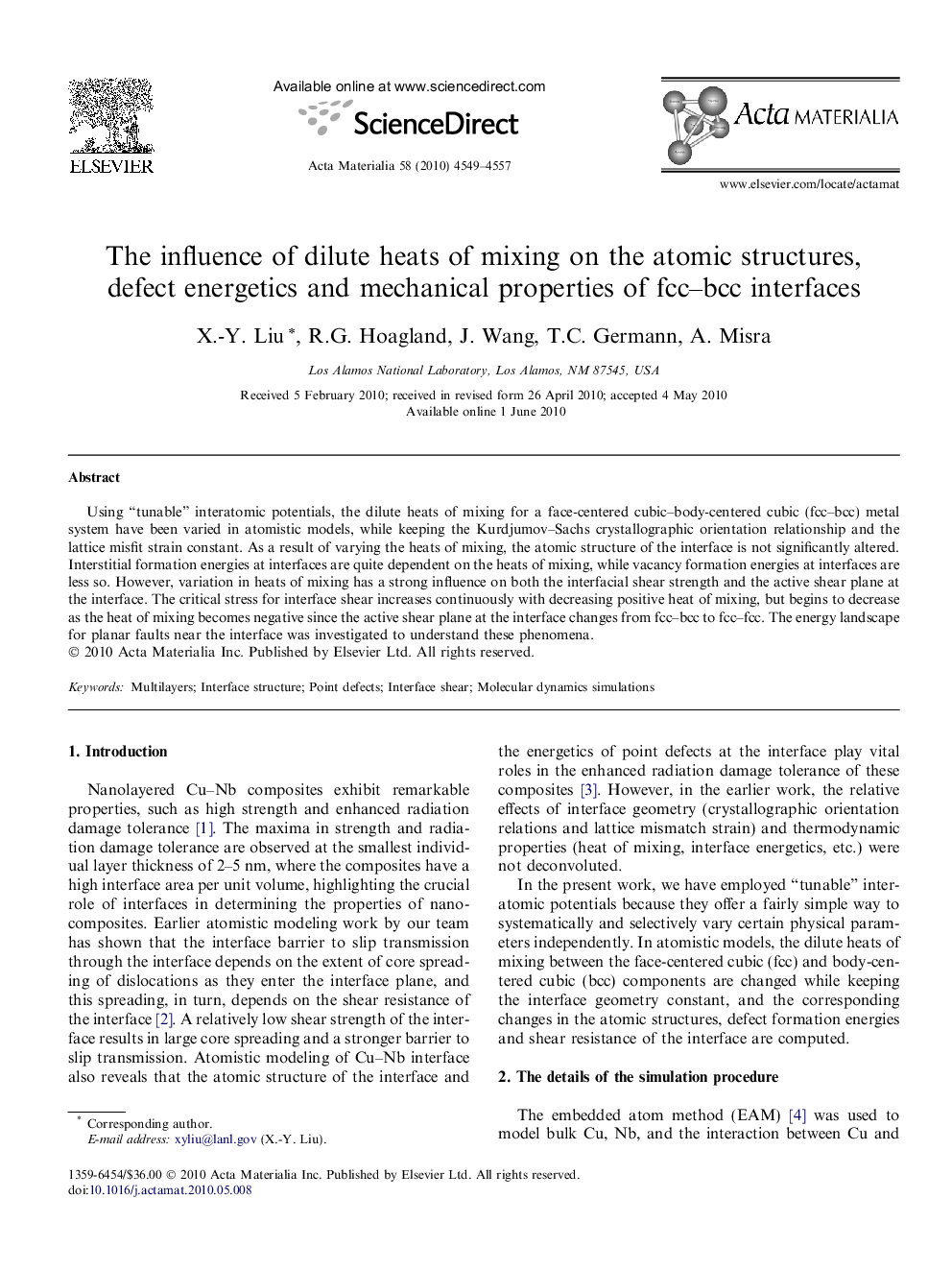| Article ID | Journal | Published Year | Pages | File Type |
|---|---|---|---|---|
| 1448581 | Acta Materialia | 2010 | 9 Pages |
Using “tunable” interatomic potentials, the dilute heats of mixing for a face-centered cubic–body-centered cubic (fcc–bcc) metal system have been varied in atomistic models, while keeping the Kurdjumov–Sachs crystallographic orientation relationship and the lattice misfit strain constant. As a result of varying the heats of mixing, the atomic structure of the interface is not significantly altered. Interstitial formation energies at interfaces are quite dependent on the heats of mixing, while vacancy formation energies at interfaces are less so. However, variation in heats of mixing has a strong influence on both the interfacial shear strength and the active shear plane at the interface. The critical stress for interface shear increases continuously with decreasing positive heat of mixing, but begins to decrease as the heat of mixing becomes negative since the active shear plane at the interface changes from fcc–bcc to fcc–fcc. The energy landscape for planar faults near the interface was investigated to understand these phenomena.
